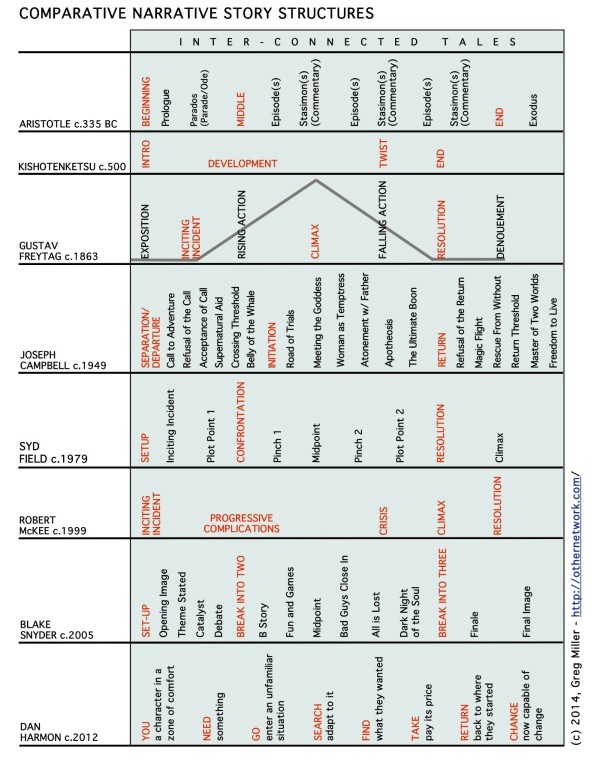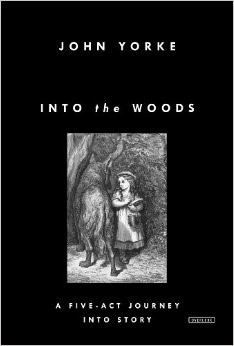
You can get along just fine without ever reading Hamlet. Dulce et decorum est is just one of many poems. There are other great novels besides Great Expectations.
But if there’s one book that ought to be required reading for every English teacher everywhere, it’s Into The Woods by John Yorke.
Act like you get it
I have the standard English teacher background of a Lit and Lang degree. But in some ways, university English is a smaller subject than the English we teach in schools. Undergraduate readers are often required to take a narrower view of texts, and one aspect of literature that falls by the wayside is narrative structure.
I’m happy to admit that until three or four years ago I had nothing intelligent to say about Shakepeare’s five act structure beyond a stale comment on the length of early modern candles.
Pretty much any self-help book on selling your screenplay will teach you about story structure. Why is Into the Woods different?
Yorke, the controller of BBC drama, is unlike the other story gurus because he’s perfectly upfront about the elephant in the room: there are dozens of competing models for story structure, superficially diverse but basically saying the same thing. In fact, it’s the proliferation of structural models that really interests him. Whether its 3 Acts or 5, the 21 Story Points or 7 Stages of Archetypal Narratives, there’s surprising uniformity. Yorke collates the most notable models into a table to align their essential sameness.
Below is a similar tabulation, from Greg Miller.
Why it matters
Story structure offers huge possibilities for teaching both the reading and writing of stories. It gives you tools to talk about the structural organisation of events, the role of characters, the success of set-ups and resolutions. I’ll be writing about some of these in the English Corridor’s ‘Beyond Words’ category.
Many teachers assume that the ‘how to’ screenwriting industry isn’t intellectually worthy of the classroom. Certainly some of the books are embarrassingly gung-ho, but Yorke is no prescriptive setter of rules. He even goes a step beyond a descriptive approach, theorising on the deep reasons for the existence of such pervasive elements of narrative structure. The result is a book on story structure with enough of an intellectual backbone for even the most snobbish of staffroom literati.


Reblogged this on THE OTHER NETWORK WRITER'S ROOM and commented:
The John Yorke book is brilliant and quite inspirational!
LikeLike